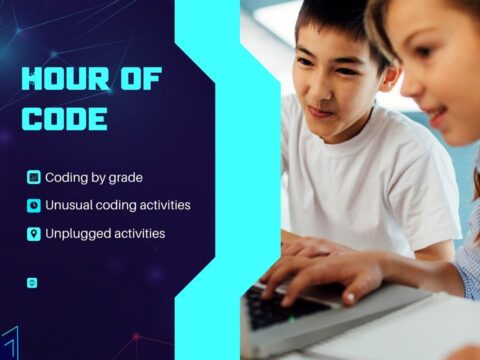If you want a job coding, you have to know how to get around a database, and that means SQL. I know–a geeky, scary three-letter word that makes even math aficionados decide to choose advanced calculus rather than computer programming. One of the Ask a Tech Teacher crew has suggestions on how to test it out and what are the most important elements to learn:
How High School Students Can Try Out SQL and 4 Things They Should Learn About It
Computers and coding languages are becoming more important in our lives with each passing day, but it can be hard for high school students to choose the best coding languages for their needs. In this article, we’re going to make a case as to why high schoolers should learn SQL.
What is SQL?
SQL is a programming language that you would use to query data in relational databases. You can create, modify, update, delete, and perform other essential operations on tables within a relational database. SQL is classified as a procedural language used to specify data types.
Most SQL programs will teach you how to read data from an analytics or database performance analyzer, such as SolarWinds’ DPA. SQL databases typically come with the following features:
- Creating tables to store written information
- Adding, deleting, and updating rows
- Reclaim database rows
- Modifying the structure of the database
- Filtering database entities
The SQL programming language has become a standardized database technology, so it’s unlikely it’s going anywhere anytime soon. SQL is incredibly popular in several industries, such as finance, music, data analysis, web development, and social media, making it really useful.
Where Can High School Students Try SQL?
While there are no prerequisites to learn or try SQL, you should brush up on coding terminology before starting your learning journey. Here are a few ways you can try SQL for yourself.
1. Try a Free Online SQL Course
If you’re not sure SQL will maintain your interest, try a free online course. We recommend Codecademy’s “Learn SQL” course or Coursera’s “Introduction to Structured Query Language” course. Both of these examples teach the basics and prepare you for intermediate courses.
2. Take a Paid Online SQL Course
Courses like “Ultimate MySQL Bootcamp” from Udemy and “Introduction to SQL” from datacamp are $179.99 and $12.42/month, respectively. If you want to buy a paid course but you’re worried about quitting halfway, a datacamp subscription would be more affordable.
3. Learn SQL Through Books
While learning how to code through a book isn’t the best option (coding is better taught through solving problems on the computer), books can be great secondary resources. Check out Alan Beaulieu’s book “Learning SQL” and Ben Forta’s book “Teach Yourself SQL in Ten Minutes.”
4. Check Out Online Resources
Another free way to learn SQL is through online resources, like blogs or podcasts. There are thousands of great bloggers online that create practice problems, but you’ll need some prior knowledge to try them out. Look up LearnSQL Blog and SQLZoo if you’re interested.
5. Get a SQL Certificate Online
If you’re planning to work in cybersecurity or IT, you could get a certificate (Microsoft SQL Certifications) before signing up for college. Not only will this make you more hireable, but it can prepare you for college-level programming language courses, such as C++, Python, and HTML.
What Should You Learn in a SQL Course?
SQL is simple to learn and opens you up to a wide variety of careers and a higher beginning wage, but you’ll need to learn the following concepts to get the most out of your SQL course.
1. How to Manipulate Data
Data manipulation means you’re adding, changing, or removing data within a database. In most courses, you’ll have to learn how to code an SQL statement, which is a database-ready command. What you input will instruct what the database does or how to perform an action.
2. How to Write Queries
SQL gives you control over how you filter data by setting conditions. These conditions are implemented through “queries,” which you’ll learn how to write so you can look up data in the database. For example, you could type the letter “t” to find emails that start with the letter “t.”
3. How to Run Aggregate Functions
The prime function of SQL is data analysis. For this reason, you’ll likely use SQL to perform math-based calculations on data and analytics found in a table. This function, called an “aggregate function,” lets you gain insight when data within a database is referenced.
4. How to Connect Tables
With SQL, you can work with more than one table simultaneously and run referential table queries. Without these queries, running an organized database or startup would be challenging. That’s because a connected table can work with various data sources within other tables.
Final Thoughts
The SQL coding language will be necessary for high school students to learn, as many of them will work with databases and technology in the near future. If you want to try out SQL, we recommend finding a free online course that teaches SQL fundamentals, like writing queries.
–images courtesy of Deposit Photo

Jacqui Murray has been teaching K-18 technology for 30 years. She is the editor/author of over a hundred tech ed resources including a K-12 technology curriculum, K-8 keyboard curriculum, K-8 Digital Citizenship curriculum. She is an adjunct professor in tech ed, Master Teacher, webmaster for four blogs, an Amazon Vine Voice, CSTA presentation reviewer, freelance journalist on tech ed topics, and author of the tech thrillers, To Hunt a Sub and Twenty-four Days. You can find her resources at Structured Learning.






































Cybersecurity specialists protect the resources of companies and organizations from hacking. Some success has been achieved in this direction – large-scale leaks have ceased to appear in the network
Good to know. Thank you!